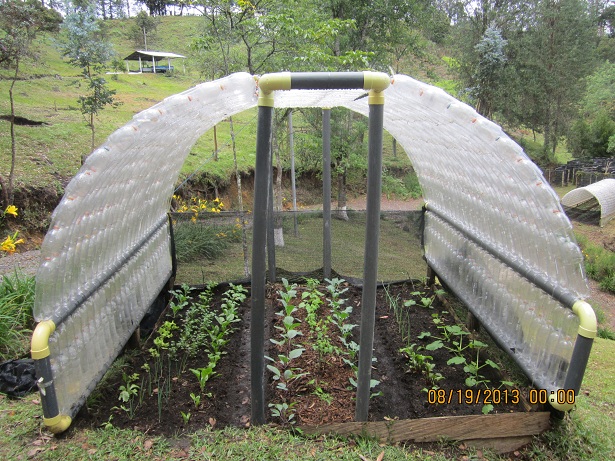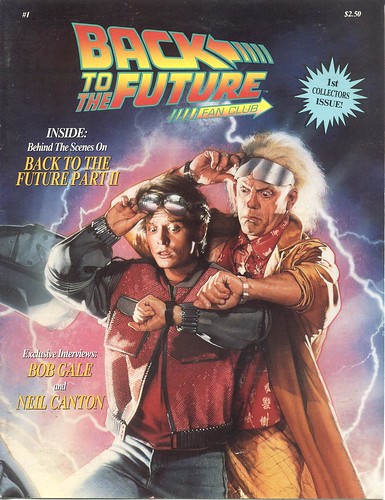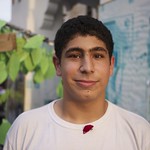Search Results for Tag: garbage
Do you really need all of that?
All we need is less?! from youthinkgreen on Vimeo.
Flo is more than a funny guy in a video. He’s a musician with a message: Think about your daily routines, your daily needs, your energy consumption or the way you use cars and plastic bags. Together with the youth network “YOUTHinkgreen” he wants to proof that little changes have an impact in our lives. In an experiment Flo is going to leave his personal comfort zone for a few weeks. From November 25th he will live without unnecessary packaging for 7 days, he will avoid motorized transport for another week and finally he will try to live without electricity. Flo will keep us updated on his feelings, successes and dissappointments, by texts, pictures and some video posts. If you want, you are free to join him.
Plastic bottles to greenhouses
 A few days ago we received a very inspiring idea from Colombia. The e-mail came from the Centre for Science and Environmental Awareness and it helps to deal with growing mountains of empty plastic bottles.
A few days ago we received a very inspiring idea from Colombia. The e-mail came from the Centre for Science and Environmental Awareness and it helps to deal with growing mountains of empty plastic bottles.
We learned from the institute’s website that in Colombia an incredibly large amount of 15,000,000 plastic bottles is dumped every day. These bottles are not only thrown into trash bins, they are mainly just thrown away somewhere and this way become a very serious environmental problem.
The Centre for Science and Environmental Awareness tries to tackle the problem. As you can see in the picture, greenhouses are built to grow daily goods. The plastic-bottle-roofs have a size of about 3×3 meters. With only 4 hours work a week the roofs help to feed a family for a whole year, writes Carlos Alberto Yepes Vera, director of the center.
He also calls out to donate bottles or similar garbage to build more of these houses. The project’s goal, he says is also to build an awareness among the population to avoid the use of plastic bottles.
We are extremely grateful to hear from ideas like this one, so send us more of it!
Scientists turn trash into crude energy

Remember Doc Brown? That crazy, white haired caricature of a scientist from the 1980s blockbuster scifi comedy Back to the Future? He’s the inventor of a spectacular (and – sadly – fictitious) device called the flux capacitor that is running first on plutonium, later on ordinary household garbage to power a time machine. Here’s what it looks like when Doc Brown is searching for fuel:
Scientists in Denmark have now hit upon a novel way to do just that: producing energy from household waste. While not quite matching Doc Browns achievement when it comes to the amount of energy harvested (let alone building a time machine) the scientists’ feat is impressive enough: Feeding biomass (comprising anything from sewage, compost, household garbage or waste from meat and dairy production) into what is essentially a 400 °C hot pressure cooker they managed to create something very close to fossil crude oil. What’s more, the production process used is more energy efficient than any other way of getting energy out of biomass.
We figure, if the Danish research team is still unhappy with the energy yield of their trash, they only have to wait another two years for expert help: In Back to the Future – Part II we learn that Doc Brown is going to visit us in 2015.
An awkward position
Klaus Esterluss and Kerstin Schnatz, Doha
They all had to squeeze through: Shoppers and staff from surrounding restaurants moved past a tree made out of cans and tires at Doha’s traditional market area yesterday. 16 year old Mourad Farahat from Egypt and his friends from the organisation „You Think Green“ tried to raise the awareness of passers by for a greener future. Despite having received a permission for setting up their action at a spacious juncture a few meters further down, security guards told them to move the symbolic tree to a very inconvenient area with hardly any space, between a wall and the outside seating area of a restaurant.
Planting a tree at Doha’s Souq Waqif from DW_Global Ideas on Vimeo.
Critical juncture
By being in this awkward position of Doha’s „Souq Waqif“, the youths shared a fate with the international climate negotiations taking place in the same city that day. Civil society groups watching the international process carefully, are heavily critizising the Qatari Presidency for not showing enough leadership. „Key elements are stalling“ Wael Hmaidan, director of Climate Action Network, said. According to Hmaidan, the talks that are scheduled to end on Friday, December 7th, were at „a critical juncture“. The NGO expert is in line with young Mourad, when asking for a global reduction of carbon emissions and more money to help poorer countries adapting to climate change.
What’s your plastic footprint?
With so much talk of climate change and carbon dioxide emissions nowadays, most people are familiar with a carbon footprint. But what about a plastic footprint?
An initiative in Hong Kong called The Plastic Disclosure Project plans to send out questionnaires to companies and institutions around the world asking them to assess, monitor and report their use of plastic. The aim is to get them to cut their plastic consumption as well as try to change the awareness and behavior of big users of plastic.
Environmentalists have long complained that plastic pollution has become a major threat to the world’s water bodies and the environment. If the plastic footprint becomes as widespread as its carbon counterpart, the project may just lead to a real clean up.










Feedback